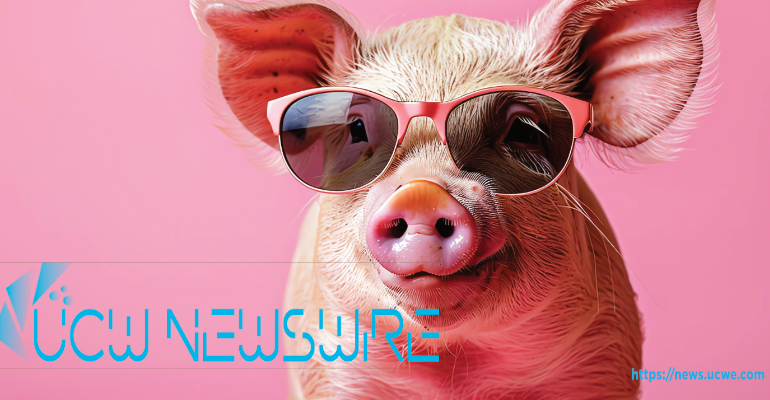The Case Against Memecoins, Why They Should Be Outlawed or Regulated
Digital assets are reshaping the financial landscape, there is no question about that and memecoins have emerged as the most perplexing phenomenon in the cryptocurrency industry. Unlike utility-driven tokens such

Digital assets are reshaping the financial landscape, there is no question about that and memecoins have emerged as the most perplexing phenomenon in the cryptocurrency industry. Unlike utility-driven tokens such as Ethereum, Solana, XRP or Pecu Novus, which serve as the backbone for decentralized finance (DeFi), smart contracts, and enterprise solutions, memecoins exist in a gray area.
They are neither collectible NFTs nor functional fan tokens, so what exactly are they? And more importantly, should they even be allowed to exist in an unregulated market?
The Reality Behind Memecoins
At their core, memecoins are often speculative assets designed more for hype than for function. While some argue that they serve as a form of entertainment or even a digital community-building tool, the reality is that most memecoins are created with little to no intrinsic value. Unlike established cryptocurrencies that power financial transactions, decentralized applications, or tokenized assets, memecoins primarily serve as a mechanism to enrich their creators and early adopters at the expense of unsuspecting retail investors.
Memecoins thrive on social media hype, celebrity endorsements, and retail FOMO (fear of missing out). They lack the technological backbone that defines true blockchain innovation. Without a clear use case, their only function seems to be their ability to generate short-term speculation, making them a ticking time bomb for market instability.
“Memecoins are a stain on the crypto industry. Not only do they siphon capital away from projects with real-world utility, but they also leave investors vulnerable to blatant manipulation. We’ve seen it happen with $LIBRA, which leveraged an endorsement from Argentine President Javier Milei, and $HAWK, the Hawk Tuah crypto scam tied to Hailey Welch that drained millions from unsuspecting investors. Even more alarming, platforms like Pump Fun have been linked to the North Korean Lazarus Group. The common denominator in all of these? The Solana blockchain. Perhaps that’s where the scrutiny should begin.” Cryptocurrency industry leader (commenting off record).
Gambling Disguised as Investment?
Memecoins have effectively turned the cryptocurrency market into a digital casino, where people throw money into assets based on internet trends rather than financial or technological fundamentals. If the primary appeal of memecoins is the chance of winning big on speculative trading, shouldn’t they fall under gambling laws?
In traditional finance, securities undergo strict vetting before being made available to investors. Even in gaming, betting mechanisms are heavily regulated to ensure consumer protection. However, in the crypto space, anyone with minimal coding knowledge can launch a memecoin, promote it through influencers, and rake in millions before the hype fades. Should regulators begin treating memecoins as gambling assets rather than financial instruments? If so, that would mean restrictions, licensing requirements, and regulatory oversight before they can even be minted or listed.
Should Memecoins Be Banned or Vetted?
While banning all memecoins outright may seem extreme, at the very least, there should be a mechanism for vetting new crypto projects before they hit exchanges. This could include:
- Strict Listing Requirements:– Exchanges should be held accountable for verifying the legitimacy and use cases of new tokens before allowing them to be traded.
- Regulatory Oversight:– A governing body, even if assembled via the Blockchain Association, should ensure that memecoins adhere to transparent practices, including disclosures about token allocation, developer control, and liquidity restrictions.
- Consumer Protection Measures: Investors should be made aware of the speculative nature of memecoins and the risks associated with them, similar to the disclaimers required in gambling industries.
Utility Over Speculation
Cryptocurrency has the potential to transform financial systems worldwide, but memecoins threaten to derail progress by reinforcing the perception that crypto is nothing more than a speculative bubble. Instead of fueling short-lived trends that result in financial losses for millions, the focus should be on utility-driven blockchain networks that offer real-world applications.
With blockchains like Ethereum, Solana, Avalanche, Pecu Novus, and XRP leading the way in payments, smart contracts, and enterprise solutions, the future of crypto should be centered on innovation rather than hype-driven speculation. If the industry does not self-regulate, it risks facing even harsher governmental crackdowns that could stifle real progress.
Memecoins may have started as a joke, but their impact on the crypto industry is far from humorous. Whether through outright bans or stringent vetting procedures, it’s time to acknowledge that unchecked speculation serves no one except those pulling the strings behind the scenes. The crypto space must evolve beyond quick-money schemes and focus on real technological advancements. The question is no longer whether memecoins should be regulated, but how soon action will be taken to prevent further financial exploitation.
Jason Miller
UCW Newswire

